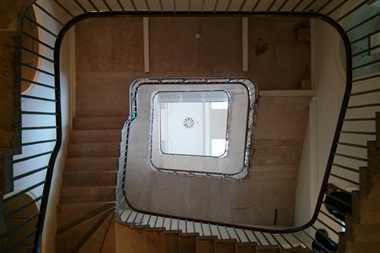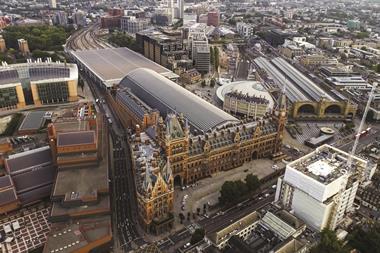One of the nice things about going into the office during a pandemic is how much space you have to yourself.

At Property Week Towers, all the desks are separated by see-through screens, there are hand sanitisers and antibacterial wipes everywhere you look and only every other desk is in use, which is academic anyway as so few people are in.
Of course, I miss the hubbub of normal office life, but with Covid cases on the rise again, being able to socially distance so easily is reassuring (especially for a naturally antisocial person like me). Also, there is no queuing for the lifts, loos or printers, and thanks to the new Covid cleaning protocols, everything is so clean. Am I going to miss the current normal when Freedom Day finally comes?
Yes, I am – and I won’t be the only one. My guess is that after a year and a half of working from home or hybrid working, few will be clamouring for a return to a pre-Covid style of office working, where everyone is crammed in like sardines, five days a week, come rain or shine, colds or flu. They’ve become too accustomed to the new flexibility. They have become too accustomed to all the space.
So could the new norm look closer to this current reality than the old? Could we be about to see a wave of de-densification of office space?
The current guidance recommends 8 sq m to 10 sq m for each workstation. Chief executive Richard Kauntze says it is “too early” to say what the revised figure will be, but a briefing from the BCO drops a pretty big hint. “Imagine lower-occupancy density (one person per 12 sq m) and agile offices, perhaps with improved services on hand, health clinics provided in major office buildings, supporting physiotherapists, doctors and dentists, shared meeting and auditorium spaces and even hotels, with touch-down project areas and flexible team spaces,” it says.
We may not have to imagine for much longer. But how widely will the guidance be followed? After all, it is just guidance.
The cynics will say cost is everything and businesses won’t be prepared to fork out for more space to accommodate fewer people, especially not coming out of a pandemic. The counter argument is that they may have no choice. With suggestions that the government could make it illegal to force workers back to the office, businesses will have to do everything they can to persuade people to return even three days a week – and to convince them that the reward is worth the risk.
Throw in the war for talent and that will surely result in a flight to quality, which in turn will translate into lower-density office environments, in some industries anyway.
The big question is what this will mean for flexible workspace operators, some of which currently offer closer to 3 sq m per workspace. Will it break the model, as some suggest? Perhaps not, but it will definitely bend it – and probably send desk rates up.
What can also be said with some certainty is that we are unlikely to see further densification. Office workers reconditioned to expect more space won’t tolerate it – or employers that assume they will.





























No comments yet